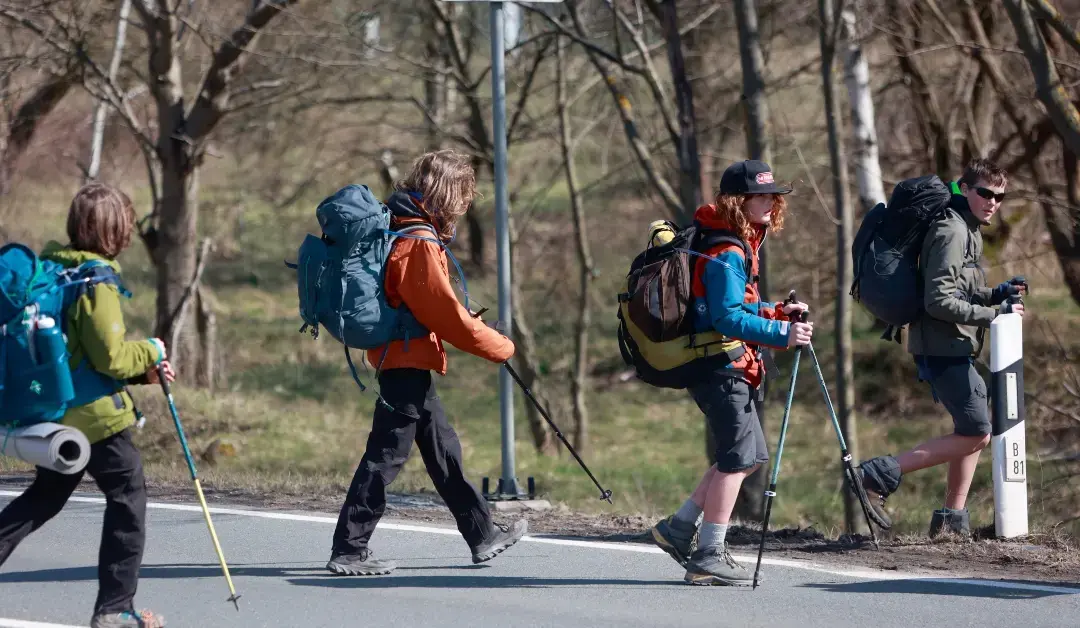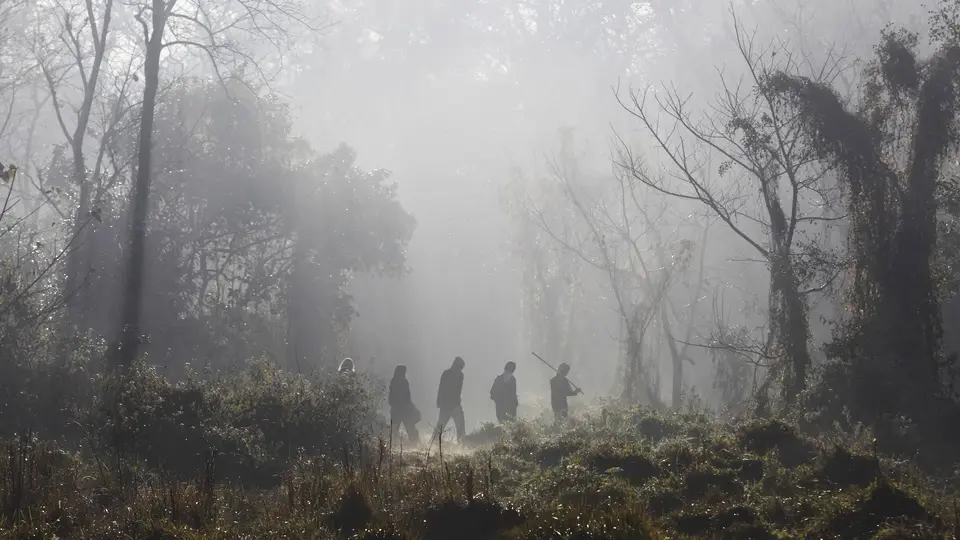In the realm of therapeutic wilderness programs, Bluefire Wilderness has gained attention not only for its unique approach but also for legal scrutiny in the form of lawsuits. This comprehensive exploration delves into the landscape of Bluefire Wilderness lawsuits, uncovering the intricacies, controversies, and potential implications associated with legal actions against the program.
The Genesis of Bluefire Wilderness
Founding and Philosophy

To comprehend the context of Bluefire Wilderness lawsuits, it’s essential to delve into the program’s founding principles and therapeutic philosophy. Understand the mission, values, and objectives that set the stage for its establishment.
Program Components and Approach
Explore the components of Bluefire Wilderness that distinguish it within the therapeutic wilderness landscape. Gain insights into the methodologies employed, the target demographic, and the overall approach to mental health and behavioral challenges.
Legal Challenges: Bluefire in the Courtroom
Overview of Lawsuits
Analyze the scope and nature of lawsuits directed at Bluefire Wilderness. Provide an overview of the legal challenges, including the specific allegations, plaintiffs involved, and any noteworthy legal battles that have unfolded.
Common Allegations
Uncover the common themes and allegations brought forth in Bluefire Wilderness lawsuits. This section will delve into issues such as negligence, misconduct, or any claims that have been recurrent in legal actions against the program.
Legal Dynamics in the Therapeutic Wilderness Industry
Regulatory Landscape
Examine the broader regulatory landscape governing therapeutic wilderness programs, shedding light on the legal parameters within which organizations like Bluefire Wilderness operate. Understand how compliance or non-compliance may influence legal outcomes.
Precedents in the Industry
Investigate whether Bluefire Wilderness lawsuits have set precedents within the therapeutic wilderness industry. Explore how legal decisions regarding the program may impact similar programs and the industry as a whole.
Voices from Both Sides
Plaintiffs’ Perspectives
Present the perspectives and voices of individuals or entities filing lawsuits against Bluefire Wilderness. Include narratives, if available, that provide insight into the motivations and experiences that led to legal actions.
Bluefire Wilderness Defense
Offer a balanced view by exploring Bluefire Wilderness’s defense against lawsuits. Incorporate statements, legal arguments, or official responses from the program to provide a comprehensive understanding of both sides of the legal spectrum.
Implications for Participants and Families
Impact on Participants

Analyze how legal challenges may impact current or former participants of Bluefire Wilderness. Explore any changes in program dynamics, policies, or offerings resulting from legal scrutiny.
Families’ Decision-Making
Examine the decision-making process for families considering or currently involved with BlueFire Wilderness Lawsuit in light of legal challenges. Explore how lawsuits may influence perceptions and choices within the target demographic.
The Road Ahead for Bluefire Wilderness
Adaptations and Changes
Investigate any adaptations or changes implemented by BlueFire Wilderness Lawsuit in response to legal challenges. Assess how the program has evolved and whether modifications have been made to address the issues raised in lawsuits.
Future Outlook
Offer insights into the potential trajectory for BlueFire Wilderness Lawsuit in light of past legal challenges. Consider how the program may shape its future operations, reputation management, and relationships with participants and their families.
Learning from Legal Challenges
Lessons for Wilderness Programs
Reflect on the lessons that other therapeutic wilderness programs can learn from the legal challenges faced by Bluefire Wilderness. Identify best practices and areas of improvement to ensure ethical and responsible operations.
Importance of Transparency
Highlight the significance of transparency in the therapeutic wilderness industry. Discuss how open communication, clear guidelines, and transparent practices can contribute to building trust with participants, families, and regulatory bodies.
Participant Experiences and Testimonials
Firsthand Experiences
Incorporate firsthand accounts and testimonials from individuals who have participated in BlueFire Wilderness Lawsuit programs. Explore their experiences, both positive and negative, shedding light on the impact of the program on their lives.
Effectiveness of Therapeutic Approaches
Evaluate the effectiveness of BlueFire Wilderness Lawsuit therapeutic approaches through participant narratives. Discuss whether the program has successfully addressed mental health and behavioral challenges, as reported by those who have undergone the experience.
Industry Best Practices
Establishing Clear Guidelines
Discuss the importance of establishing clear guidelines for therapeutic wilderness programs. Explore how adherence to industry best practices can mitigate legal risks and contribute to positive outcomes for both participants and programs.
Continuous Training and Evaluation
Emphasize the need for continuous training and evaluation of staff within therapeutic wilderness programs. Examine how ongoing professional development can enhance the quality of care provided and reduce the likelihood of legal challenges.
Community Impact
Local Community Perceptions
Investigate how Bluefire Wilderness lawsuits have impacted the perceptions of the local community. Explore whether the program’s presence has influenced community opinions and whether legal challenges have had broader repercussions.
Collaboration with Stakeholders
Examine the program’s collaboration with stakeholders, including local authorities, mental health professionals, and educational institutions. Assess whether such collaborations have been affected by legal challenges and the steps taken to rebuild relationships.
Legal Strategies and Precautions
Legal Precautions for Programs
Provide guidance on legal precautions that therapeutic wilderness programs, including BlueFire Wilderness Lawsuit, can take to minimize the risk of legal challenges. Discuss proactive measures that can contribute to legal preparedness.
Collaboration with Legal Experts
Explore the importance of collaboration with legal experts within the industry. Discuss how programs can benefit from legal counsel to navigate challenges, ensure compliance, and respond effectively to legal issues.
Moving Forward: Rebuilding Trust and Credibility
Rebuilding Trust

Discuss strategies employed by Bluefire Wilderness to rebuild trust with participants, families, and the community in the aftermath of legal challenges. Highlight any initiatives aimed at transparency, accountability, and positive communication.
Commitment to Continuous Improvement
Emphasize the program’s commitment to continuous improvement. Explore whether Bluefire Wilderness has communicated its dedication to learning from past challenges and making tangible improvements to enhance its operations.
BlueFire Wilderness Lawsuit Conclusion:
As we conclude this comprehensive exploration of Bluefire Wilderness lawsuits, it becomes apparent that the intersection of therapeutic wilderness programs and legal scrutiny brings forth complexities and nuances. The program’s journey through legal challenges serves as a case study in an industry where the balance between therapeutic efficacy and legal responsibility is paramount. Whether Bluefire Wilderness emerges from legal crossroads stronger, transformed, or facing continued challenges, the implications resonate not only within the program but reverberate across the broader landscape of therapeutic wilderness initiatives.
BlueFire Wilderness Lawsuit (FAQ) Frequently Asked Questions:
- What are the main allegations in the Bluefire Wilderness lawsuits?
- Explore the primary claims and accusations that have been raised in legal actions against Bluefire Wilderness.
- How many lawsuits has Bluefire Wilderness faced, and over what period?
- Provide an overview of the number of legal challenges the program has encountered and the timeframe in which these lawsuits have occurred.
- Are there common themes or patterns in the lawsuits against Bluefire Wilderness?
- Investigate whether there are recurring themes or patterns in the allegations brought forth in different legal actions against the program.
- Has Bluefire Wilderness been found liable in any of the lawsuits?
- Explore whether there have been legal judgments or settlements that found Bluefire Wilderness liable for the allegations made against it.
- What legal measures or defenses has Bluefire Wilderness employed in response to lawsuits?
- Provide insights into the legal strategies or defenses that Bluefire Wilderness has utilized to respond to the lawsuits it has faced.
- How have Bluefire Wilderness participants been affected by the legal challenges?
- Examine the impact of legal challenges on individuals who have participated in Bluefire Wilderness programs, including any changes in the program’s dynamics.
- Have there been changes in Bluefire Wilderness operations as a result of legal scrutiny?
- Investigate whether the program has implemented any operational changes or modifications in response to the legal challenges it has encountered.
- How have Bluefire Wilderness lawsuits influenced perceptions within the therapeutic wilderness industry?
- Explore whether the legal challenges faced by Bluefire Wilderness have had broader implications for how therapeutic wilderness programs are perceived within the industry.
- What steps has Bluefire Wilderness taken to rebuild trust with participants and their families?
- Provide information on any initiatives or measures taken by Bluefire Wilderness to rebuild trust and credibility with participants and their families following legal challenges.
- Is Bluefire Wilderness actively working to prevent future legal issues?
- Discuss any proactive measures or strategies that Bluefire Wilderness has implemented to minimize the risk of encountering legal challenges in the future.

Insightful Blogger Navigating News, Business, Tech, and More on its newsy: Meet Herman Danner, a seasoned blogger on its newsy, with a keen eye for dissecting the latest in news, unraveling business dynamics, and exploring the ever-evolving landscape of technology. Herman’s blogs offer a multifaceted perspective on various niches, providing readers with insightful analyses and a comprehensive view of the fast-paced world we live in. Join Herman on its newsy for a thought-provoking journey through news, business, tech, and beyond. Contact: [email protected]